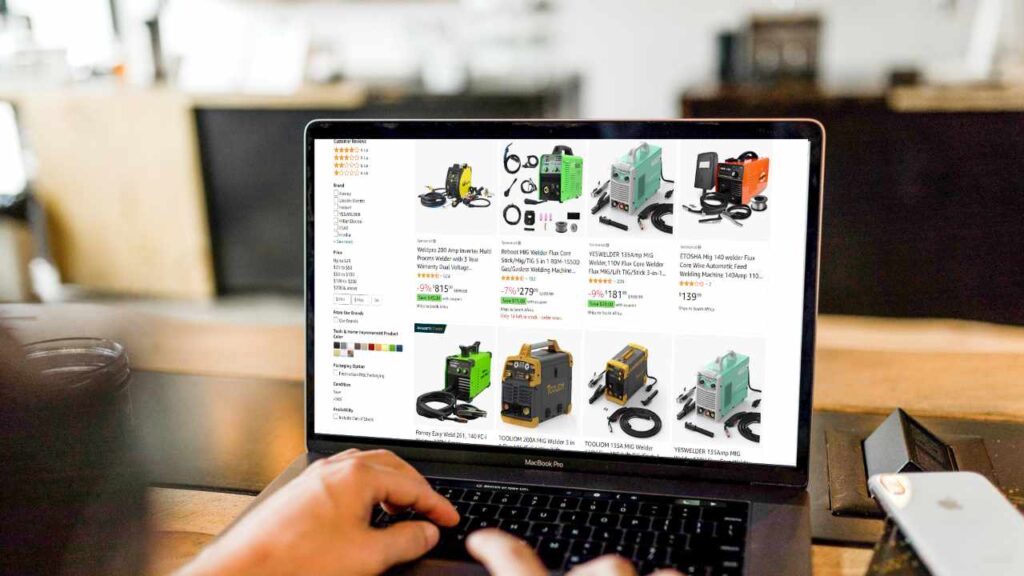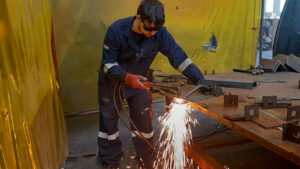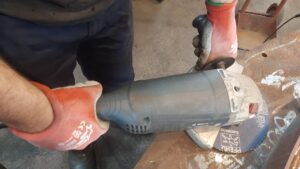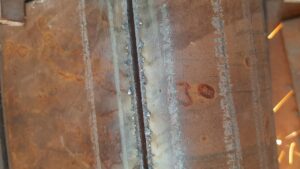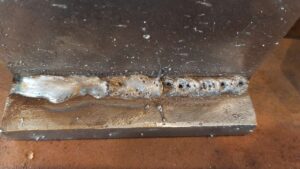- Wire-speed and voltage selector
- Max wire roll size
- AC/DC modes
- Amps/Voltage
- Gas/gasless
| Wire-speed and voltage selector | Should have a dedicated one for both |
| Max wire roll size | 2lbs – 10lbs |
| AC/DC | DC for MIG |
| Amps | 200 and up is ideal |
| Voltage | Dual voltage |
| Gas or gasless | Must be gas capable |
My ideal MIG welder that covers all these points and more that’s is reasonably priced.
Dedicated wire speed and voltage selectors
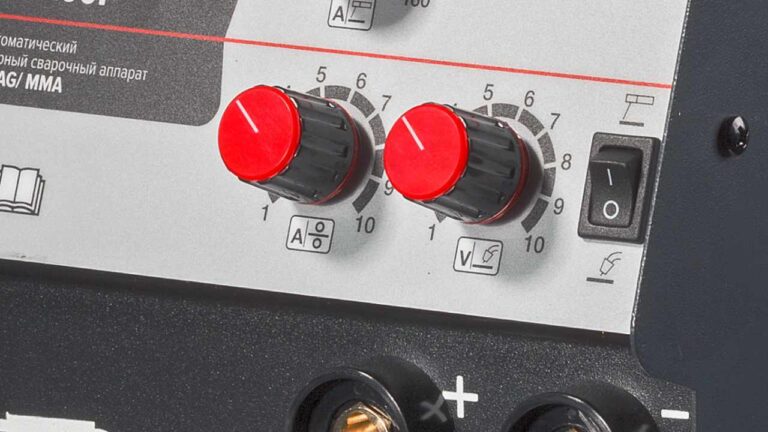
The first thing you have to check for when you get any sort of MIG welder is to get one that has a dedicated wire-speed selector and a dedicated voltage selector.
Because if you opt for one without only one of these that states it automatically sets the voltage to the speed of the wire. You might find yourself in a situation where you need to use a different wire or you feel like you need a bit more voltage for the wire speed due to the position you are welding or whatever more.
You won’t be able to adjust the voltage leaving you with a lot of frustration because your welds won’t come out looking as good as what you want them to look.
The symbol that looks like a percentage sign but tilted indicates the wire speed.
Max and min wire roll size
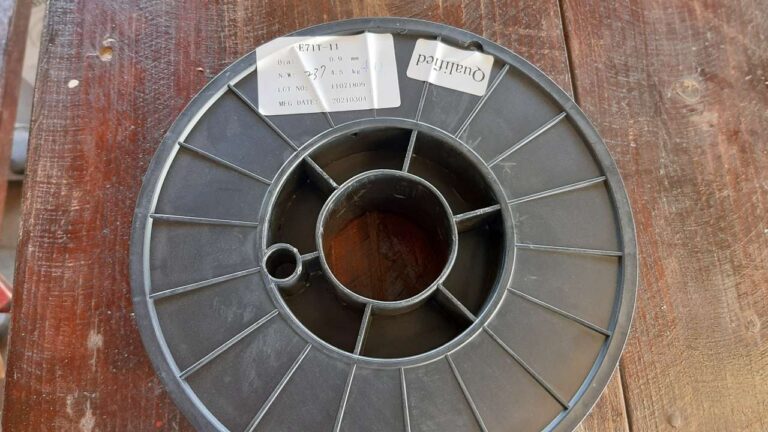
You get a few different wire roll sizes that range from 2lbs to 33lbs. The most common you will find for hobby welding is the 2lbs and 10lbs wire rolls. You will also find that most machines used by hobbyists, DIYs, and professionals can only take 2lbs or 10lbs wire rolls. The 33lbs wire rolls are usually limited to industrial MIG welding machines used in the manufacturing of large products.
Most professionals use the smaller welding machines that are rated to hold up to the 10lbs wire rolls, especially if they travel or just weld smaller items.
Large industrial MIG welders tend to be too big, too expensive, or just unnecessary for small-scale work. Most of the machines used in factories also use a three-phase power supply which is very uncommon in non-industrial areas.
If you are buying a machine that you are going to use at home, for DIY, or professionally to build smaller projects I recommend looking for the machines that only take up to 10lbs rolls because you most likely won’t need any more than that.
Just note when I am talking about large projects I am mentioning something that has a lot of welding on thick metal 10mm and up or structural items such as beam supports. If you are going to build a whole new kitchen or build furniture for a whole house. I won’t consider it a “large” project relative to the welding so the smaller machines are still fine for such an undertaking.
Make sure it doesn’t use a 3-phase power supply
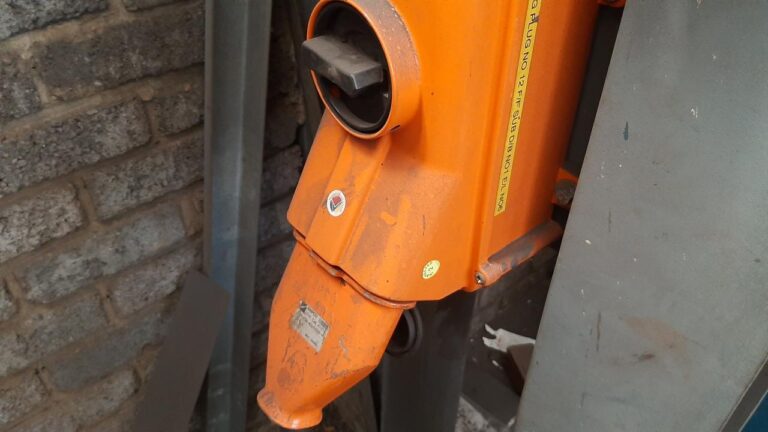
As mentioned lightly above most homes or non-industrial areas don’t have three-phase power. That is why you should make sure when you are getting a MIG welding machine or any welding machine, that it doesn’t require a three-phase power supply.
If you are looking at the description of a machine and it doesn’t mention anything about three-phase power then it is safe to assume it only uses a single-phase power supply.
The difference between a three-phase power supply and a single-phase is that a three-phase just supplies a more stable stream of electricity. This is important in the industrial industry when talking about welding.
AC/DC modes
Most welding methods use DC(direct current) in the welding process. In fact, all welding methods use DC for the welding process. The only real reason you might need AC(alternating current) when welding on small scale is when you want to weld aluminum.
If you are interested in just welding carbon steel I won’t stress too much about the technicality of AC/DC machines because by default the machines will be DC and you will only really need to check for the AC if you are planning to weld aluminum as mentioned above.
Amps & voltage
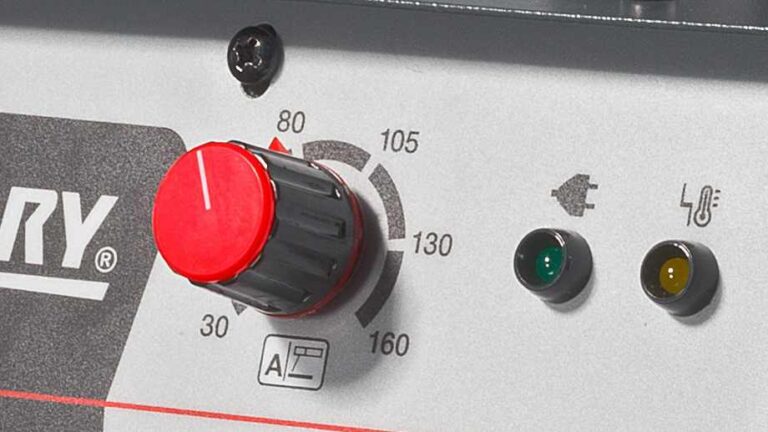
Amps and voltage that a MIG welder can reach boil down to the thickness of the material you will be able to weld and the width of the weld. The more the amps the thicker the material you will be able to weld. The more volts the wider your weld will be.
When checking that machines they usually state what thickness they can weld, but if not the amps will be a good indicator of the thickness. That is why higher amp machines tend to be more expensive.
When looking at the voltage on the specification of the machine they are referring to the voltage input and for the amps, they are referring to amp output. This can be a bit confusing when taking it at face value, but if you buy a MIG welding machine in your own country you will most likely get the correct voltage for the electrical grid so you won’t need to stress about it.
To make sure you can google your country’s grid volts and Hz. I know the US works on 120V and at 60Hz so a machine that states 110/220 will be fine because there’s a 10% tolerance. For example, if you generate something at 200V something at 180V and 220V will still work.
Gas or gasless MIG welding
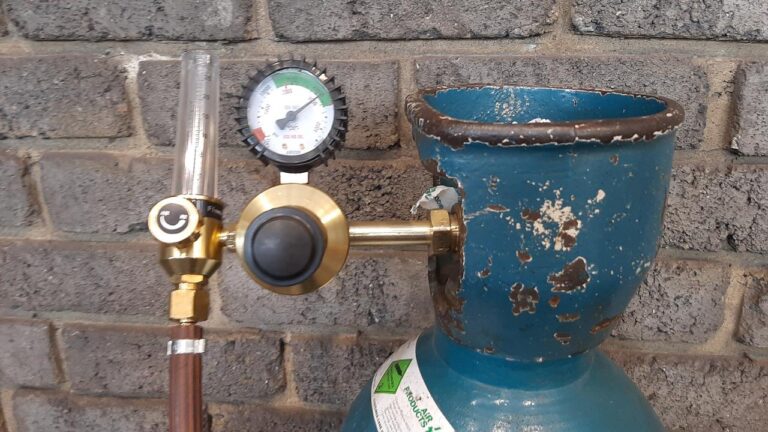
The term MIG(metal inert gas) implies that there is gas, you also get “gasless” MIG welding which is actually called flux-core welding.
The reason why they call it gasless MIG welding and not flux-core sometimes is because both MIG and flux-core welding use similar machines and you can always use a MIG machine to weld flux-core, while you won’t be able to use a dedicated flux-core(gasless) machine to weld MIG due to some machines just not having an inlet for gas.
When looking for MIG welders just make sure it has a gas inlet, they are usually at the back of the machine and are clearly marked “gas” on it.
If you are interested in just getting a flux-core machine you can still follow the steps above because both machines are basically the same, just with a flux-core machine there’s no gas inlet, and can be cheaper than a MIG machine.
Conclusion
In conclusion you shouldn’t cheap out on a welder because you most likely are going to struggle, but you shouldn’t spend thousands on a machine if you are only going to use it for personal or light professional work. It will be more than enough I recommend spending about $300 to $800 on a machine alone.
I did another post on why MIG welding is the best for home use. There I have a full detailed list of what everything will cost including PPE for welding.
You can also check out my post on the best budget MIG welder that you can find on Amazon that I recommend. It covers all these points mentioned above and is great for everyone from a beginner to, DIY, or a professional.

